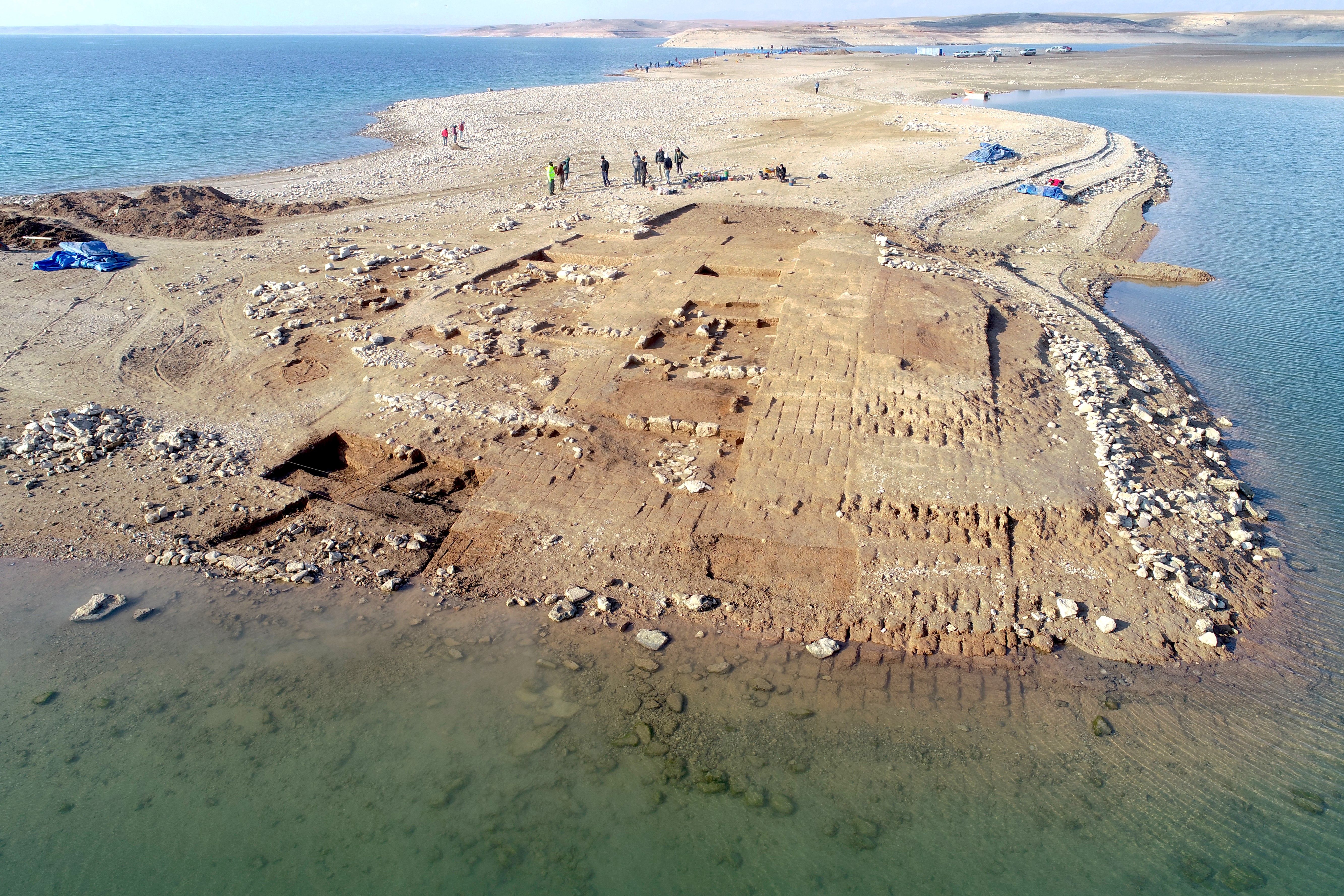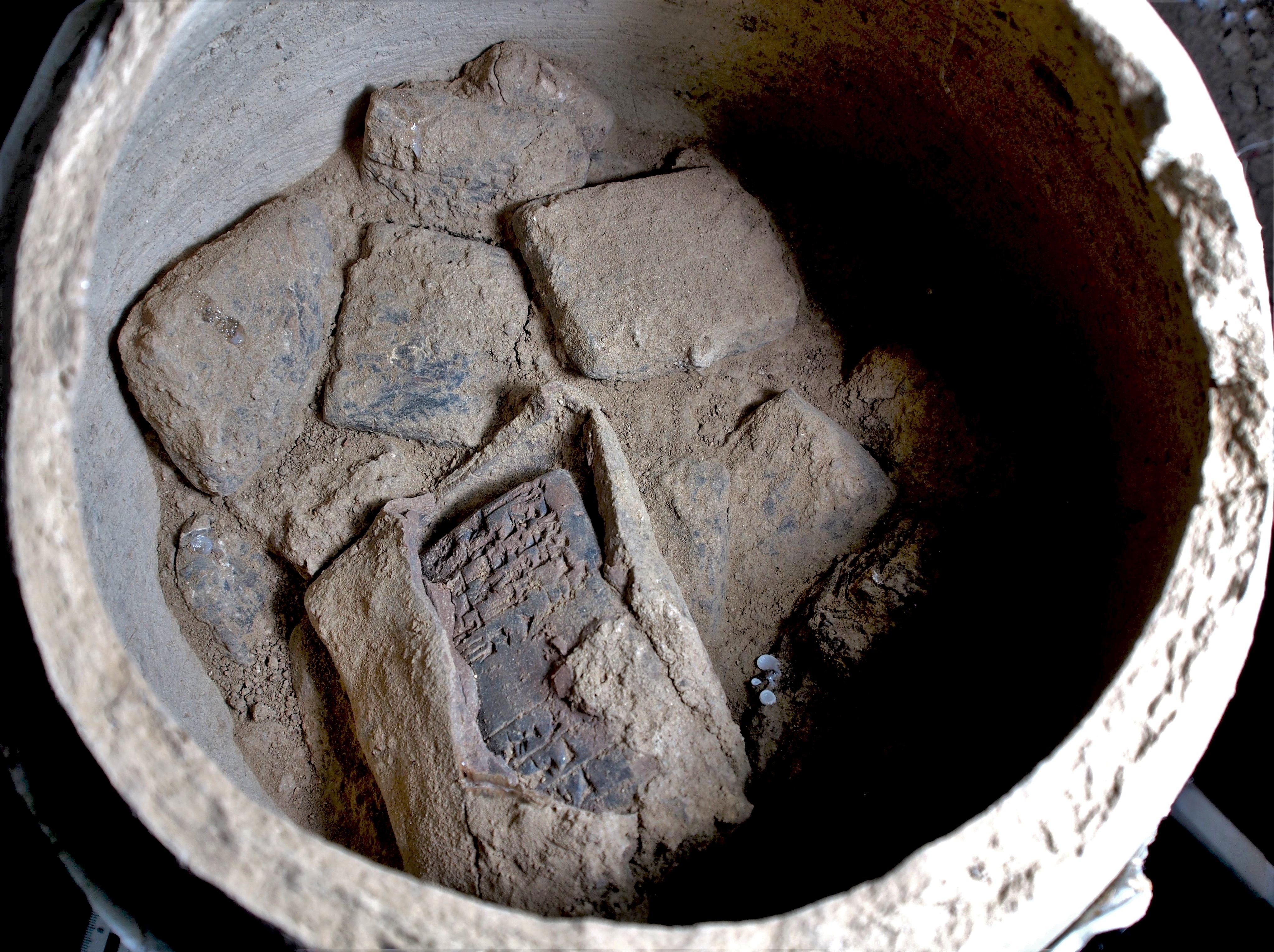There are a number of ways in which climate change, and the effect it’s having on our planet, is absolutely fascinating. We get to see species and ecosystems evolve in response to things that have never happened in human history, let alone the history of the scientific method. If it wasn’t for all the death and misery, this would be a golden opportunity for research.
It still is an opportunity for research, despite the tragic circumstances, and we are learning things about our world, and also about ourselves. A drought in Iraq has dried up a reservoir to the point where a Bronze Age city has been uncovered.
Iraq is one of the countries in the world most affected by climate change. The south of the country in particular has been suffering from extreme drought for months. To prevent crops from drying out, large amounts of water have been drawn down from the Mosul reservoir – Iraq’s most important water storage – since December. This led to the reappearance of a Bronze Age city that had been submerged decades ago without any prior archaeological investigations. It is located at Kemune in the Kurdistan Region of Iraq.
This unforeseen event put archaeologists under sudden pressure to excavate and document at least parts of this large, important city as quickly as possible before it was resubmerged. The Kurdish archaeologist Dr. Hasan Ahmed Qasim, chairman of the Kurdistan Archaeology Organization, and the German archaeologists Jun.-Prof. Dr. Ivana Puljiz, University of Freiburg, and Prof. Dr. Peter Pfälzner, University of Tübingen, spontaneously decided to undertake joint rescue excavations at Kemune. These took place in January and February 2022 in collaboration with the Directorate of Antiquities and Heritage in Duhok (Kurdistan Region of Iraq).
[…]
Within a short time, the researchers succeeded in largely mapping the city. In addition to a palace, which had already been documented during a short campaign in 2018, several other large buildings were uncovered – a massive fortification with wall and towers, a monumental, multi-storey storage building and an industrial complex. The extensive urban complex dates to the time of the Empire of Mittani (approx. 1550-1350 BC), which controlled large parts of northern Mesopotamia and Syria.
“The huge magazine building is of particular importance because enormous quantities of goods must have been stored in it, probably brought from all over the region,” says Puljiz. Qasim concludes, “The excavation results show that the site was an important center in the Mittani Empire.”
The research team was stunned by the well-preserved state of the walls – sometimes to a height of several meters – despite the fact that the walls are made of sun-dried mud bricks and were under water for more than 40 years. This good preservation is due to the fact that the city was destroyed in an earthquake around 1350 BC, during which the collapsing upper parts of the walls buried the buildings.

Aerial view of the excavations at Kemune with Bronze Age architecture partly submerged in the lake (Photo: Universities of Freiburg and Tübingen, KAO).
I want to pause here to say that the United States in particular owes the people of Iraq for decades of meddling and war. No politician of that country can claim to care about peace or justice until reparations have been made, and that’s just one of many countries on that list.
I don’t know the exact damage this drought is doing, but given the condition the country was already in, this just feels like the universe is piling on. That said, I’m glad they’re able to take the chance to study this piece of history. Some of what they’re finding is pretty neat!
Of particular interest is the discovery of five ceramic vessels that contained an archive of over 100 cuneiform tablets. They date to the Middle Assyrian period, shortly after the earthquake disaster struck the city. Some clay tablets, which may be letters, are even still in their clay envelopes. The researchers hope this discovery will provide important information about the end of the Mittani-period city and the beginning of Assyrian rule in the region. “It is close to a miracle that cuneiform tablets made of unfired clay survived so many decades under water,” Pfälzner says.

View into one of the pottery vessels with cuneiform tablets, including one tablet which is still in its original clay envelope (Photo: Universities of Freiburg and Tübingen, KAO).
I’m generally frustrated by the way society is just carrying on as if we’re not facing an existential threat, but one big exception to that is the various fields of academia. Despite popular mythology, most of this stuff is woefully underfunded (understanding the past doesn’t seem to be profitable), and I’m honestly glad that these researchers are continuing to push ahead with their work as circumstances allow.
If you like the content of this blog, please share it around. If you like the blog and you have the means, please consider joining my lovely patrons in paying for the work that goes into it. Due to my immigration status, I’m currently prohibited from conventional wage labor, so for the next couple years at least this is going to be my only source of income. You can sign up for as little as $1 per month (though more is obviously welcome), to help us make ends meet – every little bit counts!

Fascinating find – terrible way to find it. Shared thanks.
I should add that they did know it was there, and there’ve been a couple droughts that exposed parts of it in the past.
But yeah.
Likewise, in the USA, a couple of man-made lakes/dams have shrivelled down to practically nothing. This has revealed murdered bodies (of course), abandoned cars, and the bits-and-pieces of the human settlements that flooded to make the lakes.
It’s facinating at the same time it’s appalling.
Maybe something will be done about climate change now that it’s causing problems for the mob?